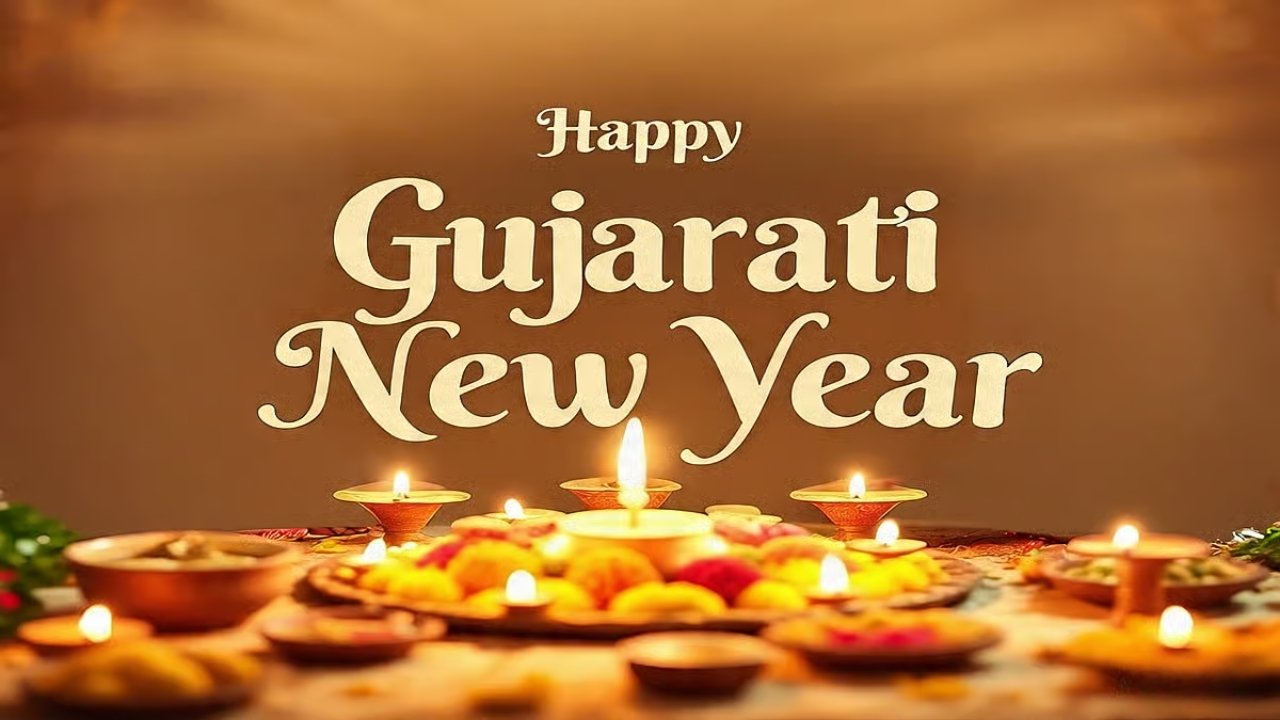
Revolutionizing Speech-to-Text: The Whisper Transc
Discover how Whisper Transcription, powered by OpenAI's Whisper model, is transforming voice-to-text

The Gujarati New Year, also known as Bestu Varas or Varsha Pratipada, is a festival that celebrates fresh beginnings, spiritual renewal, and cultural unity. In 2025, it falls on October 22, marking the start of Vikram Samvat 2082. This festival blends tradition, family gatherings, and commerce: homes are decorated, account books are closed and reopened, and festive meals are shared while greetings of “Saal Mubarak” echo across communities. This article explores the history, timing, rituals, and significance of Bestu Varas in contemporary Gujarati life.
In 2025, the Gujarati New Year is observed on Wednesday, 22 October. The lunar calendar places it on the Pratipada of Kartik Shukla Paksha, beginning the evening of 21 October and continuing into the next day. This timing sets the stage for auspicious rituals such as Chopda Pujan, traditionally performed at specific muhurats. Observed immediately after Diwali and often coinciding with Govardhan Puja, the festival carries a distinct cultural alignment, bridging celebration with reflection and hope.
Unlike regions that mark the new year in Chaitra (March–April), the Gujarati calendar begins the year in Kartik (October–November). The festival falls on the Shukla Pratipada of Kartik, the first bright day after Diwali. It aligns with Govardhan Puja, commemorating Lord Krishna’s protection of the villagers by lifting Govardhan Hill, symbolizing divine safeguarding, renewal, and devotion.
For Gujarati businesses, Bestu Varas marks the start of a new financial cycle. Old account books, known as Chopdas, are closed and new ones opened, accompanied by prayers for prosperous trade and honest earnings. This unique blend of spiritual and economic rituals highlights the festival’s dual significance in Gujarati life.
The festival emphasizes familial and social bonds. Families visit one another, exchange blessings, wear new clothes, and share festive foods. The traditional greeting “Saal Mubarak” embodies the community spirit, celebrating renewal, prosperity, and gratitude.
Homes are thoroughly cleaned and adorned with rangoli designs, fresh torans, and decorative lamps. New clothes are prepared, and families gather to welcome the day with warmth and joy.
Devotees often visit temples of Lord Ganesha, Goddess Lakshmi, and other deities, offering flowers, sweets, and incense. These prayers set a spiritual tone for a year of peace, well-being, and harmony.
A signature ritual of Bestu Varas, Chopda Pujan involves closing old account books and opening new ones. Auspicious symbols like the Swastika and Shubh Labh are drawn on the first pages, and prayers are offered for honesty, prosperity, and success. Families also participate, emphasizing the link between ethical livelihood and spiritual practice.
Traditional Gujarati foods, sweets, and snacks dominate the celebrations. Dishes such as undhiyu, fafda-jalebi, and shrikhand are shared with family and friends, reinforcing social bonds and festive cheer.
Neighbourhoods and diaspora communities organize rangoli competitions, cultural programs, children’s activities, and social gatherings. These events help maintain traditions, promote cultural identity, and strengthen intergenerational ties.
Bestu Varas 2025 marks the start of Vikram Samvat 2082, symbolizing a fresh start for families and businesses. It is a time to let go of past difficulties, reset financial plans, and embrace hope. Modern observances include digital bookkeeping, online greetings, and even live-streamed pujas for those living abroad, showing the festival’s adaptation to contemporary lifestyles while retaining its essence.
While the core values of Bestu Varas—renewal, prosperity, and gratitude—remain constant, practices vary regionally and internationally.
In villages and smaller towns, early morning processions, folk music, and extended family visits are common.
Gujarati communities abroad organize temple pujas and community gatherings, ensuring younger generations stay connected to cultural roots.
Some businesses use the day to officially launch new ventures or projects, while others focus on family celebrations and communal bonding.
Bestu Varas continues to hold relevance in today’s fast-paced world by combining tradition with practicality:
Spiritual grounding: Rituals encourage reflection, gratitude, and connection to cultural values.
Economic mindfulness: Closing and reopening account books emphasizes honesty and accountability.
Cultural continuity: Observances link younger generations to heritage, language, and traditions.
Modern adaptation: Digital tools and online platforms allow celebrations to evolve while preserving the essence of the festival.
The Gujarati New Year 2025 is a festival of hope, renewal, and togetherness. Whether through lighting lamps after Diwali, performing Chopda Pujan, or sharing festive meals, every ritual carries deep cultural meaning. For Gujaratis everywhere, the greeting “Saal Mubarak” is more than a wish—it represents faith, family, and the promise of a prosperous year ahead. Bestu Varas serves as a reminder of roots, responsibilities, and the continuity of traditions in an ever-changing world.
This article is a general overview of the Gujarati New Year 2025 (Bestu Varas), focusing on cultural, spiritual, and social aspects. Timings, rituals, and practices may vary by region. Readers are encouraged to consult local community sources or elders for specific customs and auspicious timings.